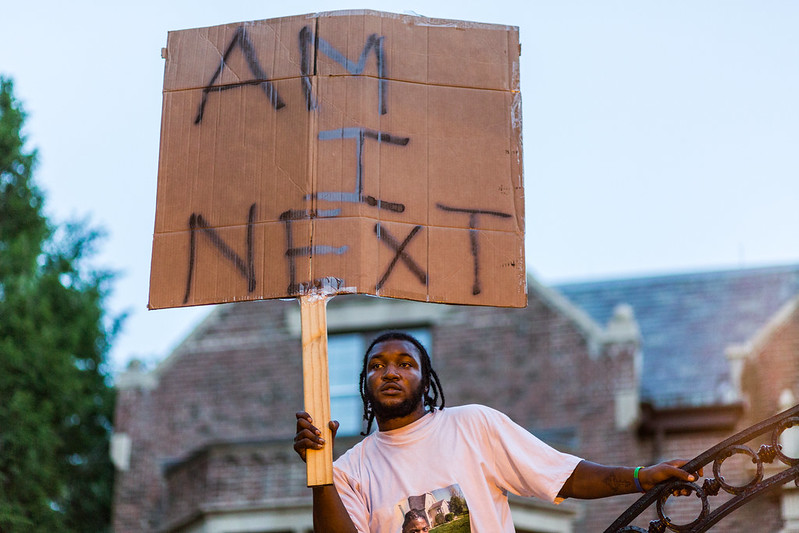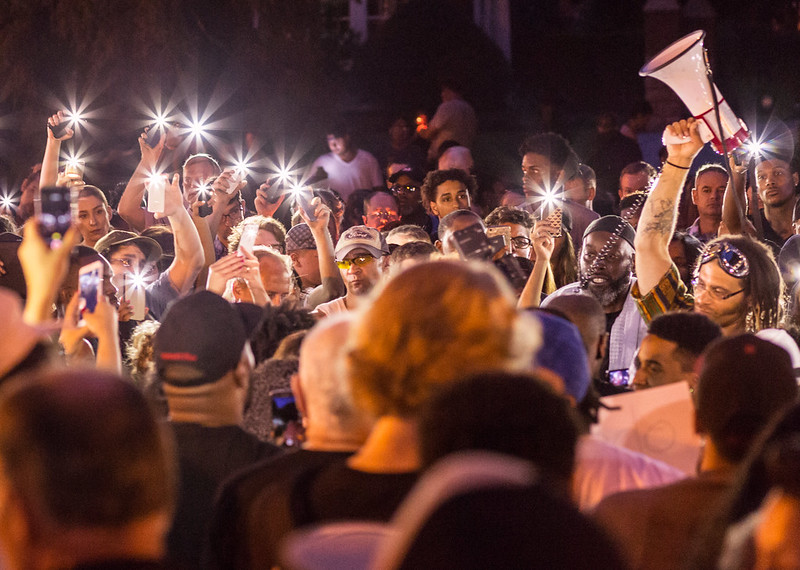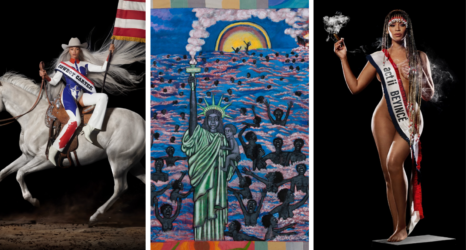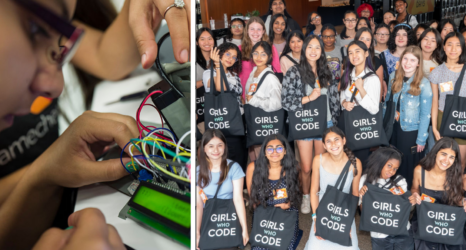Black Americans “are in the midst of some excruciating pain and grief and trauma right now.”

This article is the final installment in a three-part series that asks what can we learn from officer-involved killings, which on their own can appear isolated and disconnected from larger social conditions and cultural dynamics. In our series, “Who Killed George Floyd?,” we look at police violence as symptomatic of broader social and cultural injustice, racism and anti-Blackness, including in one of America’s most liberal communities. (Get caught up on Part 1: Who Killed George Floyd? Hidden Truths About Midwestern Racism and Part 2: Policing In America: A Deadly Disease Rooted in Slavery.)
This piece also goes hand-in-hand with “Who Killed George Floyd? (with Dr. Patricia Jones Blessman, Tasha Green Cruzat, T. Mychael Rambo, Roderick Ferguson, Pamela Alexander and Dr. George Woods).” Listen below:
On Tuesday, April 20, 2021, Derek Chauvin—the former Minneapolis officer who pressed his knee into George Floyd’s neck for more than nine minutes, until at last, Floyd could no longer breathe—was convicted on all three charges brought by special prosecutors. The jury’s conclusion of “guilty” echoed after each count read by Judge Peter Cahill:
Second degree murder—unintentional… “Guilty.” Third-degree murder… “Guilty.” Second-degree manslaughter… “Guilty.”
The conviction marked the first time a white officer was criminally convicted of killing a Black civilian while on the job in Minnesota, as local leaders were quick to point out: Some hailed it as justice finally rendered, the right result after a prosecution with impenetrable video evidence and witness testimony.
Yet, as activists would later post on Twitter and other social media, barely 30 minutes before the verdict in the Chauvin trial was announced in a Minneapolis courtroom, in Columbus, Ohio, Ma’Khia Bryant, 16, was killed in an officer-involved shooting. As Alisha Haridasani Gupta wrote for the New York Times, this was “more than just tragic”: Bryant’s death represented the “burden of Black girlhood.” And on a larger scale, for many Black Americans, it seemed too much to emotionally bear.
Thus, as we conclude our three-part series focused on the question, Who Killed George Floyd?, we thought about how to end a story that seems to have no ending? During our research and investigation for this series, Daunte Wright was killed by an officer in Brooklyn Center, a Minnesota community adjacent to the Twin Cities (where George Floyd was murdered). In Illinois, recently released video shows 13-year-old Adam Toledo with arms raised before collapsing after a single shot from an officer’s revolver. And in barely two weeks since our first installment in this series, we learned of the killing of Andrew Brown, Jr., who was shot five times, including in the back of the head by North Carolina police, and Isaiah Brown, 32, shot ten times by an officer whom he called for help. Miraculously, Brown survived.
If there were any doubt that Black people are more likely than white people to be killed during a police encounter, a report from researchers at Harvard’s T.H. Chan School of Public Health sets the record straight: Black people are 3.23 times more likely to die when encountering law enforcement.
For this series and our reporting on George Floyd and Breonna Taylor, an issue emerged over and again by the people we interviewed: trauma. For them, these killings were manifestations of something far too normalized—a horrid representation of a too common phenomenon of racism. They quickly pointed out that the murders of George Floyd and Philando Castile by police officers took place in liberal Minnesota—not Mississippi—a Jim Crow stronghold. They worried that no matter the outcome of the trial of the officers involved in Floyd’s murder (the other officers go on trial in August), their trauma would still exist, because of the culture of racism deeply embedded around them.

That is, racism manifested by police stops, microaggressions at work, discriminatory and hostile treatment while shopping for groceries and doing the innocuous, and systemic inequalities in housing and education take an enormous toll—both physically and psychologically. T. Mychael Rambo, an award-winning actor, professor, and Twin Cities community advocate, put it this way:
“It wears us out. It really, it creates health crises amongst members of our community. High blood pressure. Diabetes. Migraines. Stomach and lower GI behavior. All of those things have a direct impact, a direct correlation to just what we’re talking about and I think that it’s got to stop.”
By that point in my interview with Rambo, he confided instances where he had been slammed face-down by police in the back of his house, pulled over in front of his house on suspicion of dealing drugs, and even dragged across the parking lot at Mall of America, with his lips bloodied by police over a dispute about a parking space. As he shared with me, “So, I mean, I’m a degreed professor and everything else and well-known person, but that doesn’t stop me from being a Black man in America.”
The problem as Rambo pointed out is not just the overt cases of racism, which are distressing, but the daily “microaggressions and the presumptions” and modern-day Jim Crow codes, which are more covert but equally abusive and even deadly.
Equally, these are not just problems experienced by Black men. Judge Pamela Alexander, a fourth-generation Minnesotan and the first Black woman to serve as a judge in Minnesota, explained to me, “I’ve been stopped by the police and I’ve been a lawyer and a judge for a long time.” She recounted:
“In the suburb that I live in, I’ve had to go up to the schools here and fight for my kids when racist things have been said to them and they’ve been called names and so on and so forth. … Just because you make a comfortable living [in Minneapolis] doesn’t necessarily mean that you’re going to not encounter racism. I get followed in department stores where people think you’re stealing.”
On this latter point, Judge Alexander told me that she no longer goes to department stores in Minneapolis to avoid the racial harassment. She now pays a personal shopper just to avoid being racially profiled. In other words, as Judge Alexander pointed out, “You’re not actually spared because you may have the money to spend.”
Pull the scab or scratch beneath the surface of officer-involved shootings and what one discovers is a broader and more permanent ecosystem of racial order that imposes surveillance and hostile treatment on Black Americans regardless of wealth, employment, socio-economic status, education or immigration status—even in communities where white neighbors pride themselves on being progressive.
To be clear, as George Woods—a distinguished neuropsychiatrist who has worked with governments around the world on rebuilding after civil war and strife, as well as domestically in high profile officer-involved cases of violence—explained, the trauma associated with racism experienced by Black Americans is ongoing and not mere stress. For example, in thinking about the death of Floyd, Dr. Woods observed, “I think everyone was horrified. The difference is, of course, [that] Black people saw their brother or their uncle, or their cousin … no matter what their socioeconomic level may be.” Simply put, “So, we’re talking about trauma rather than stress” for Black people.
And, what’s the difference between stress and trauma for Black people’s health? Judge Pamela Alexander gave us a sense of how this pain and grief manifests: “It takes a toll on us physically. I think our stress levels are always higher.” For her, she associates racism with an undiagnosed, “stress-related illness” that she has endured “for many years.” Time and again, she consulted her doctors. They claimed it had to do with her work, but she pushes back on that explanation. She attributes various health harms to racism and courageously shared that even though highly educated Black people of means may not talk about it, “when you get … microaggressions on a consistent basis it does actually work to your detriment” and, in her case, causes persistent, physical health harms.
Researchers are beginning to take the health effects of racism seriously, connecting it to a range of diseases, including high blood pressure, hypertension, cardiac disease and premature death. Dr. David Williams, a researcher at Harvard, urges doctors and policymakers to take this seriously, comparing the premature deaths of Black people to a jumbo jet crashing every day.
And, according to Woods, experiencing stress from watching the video of Derek Chauvin kneeling into George Floyd’s neck is “different than [its] causing you trauma.” His point is that while white Americans may be troubled by racism, the toxic and deadly effects of it do not settle into the body like a cancer or deadly disease.
Dr. Patricia Jones Blessman, a psychologist based in Chicago who specializes in working with children and families that have experienced severe traumas, agreed. As she explained, these re-triggering events like the Chauvin trial and officer-involved killings are compounded by the daily anxieties of racism. As a result, Black Americans “are in the midst of some excruciating pain and grief and trauma right now.”
Up next:





